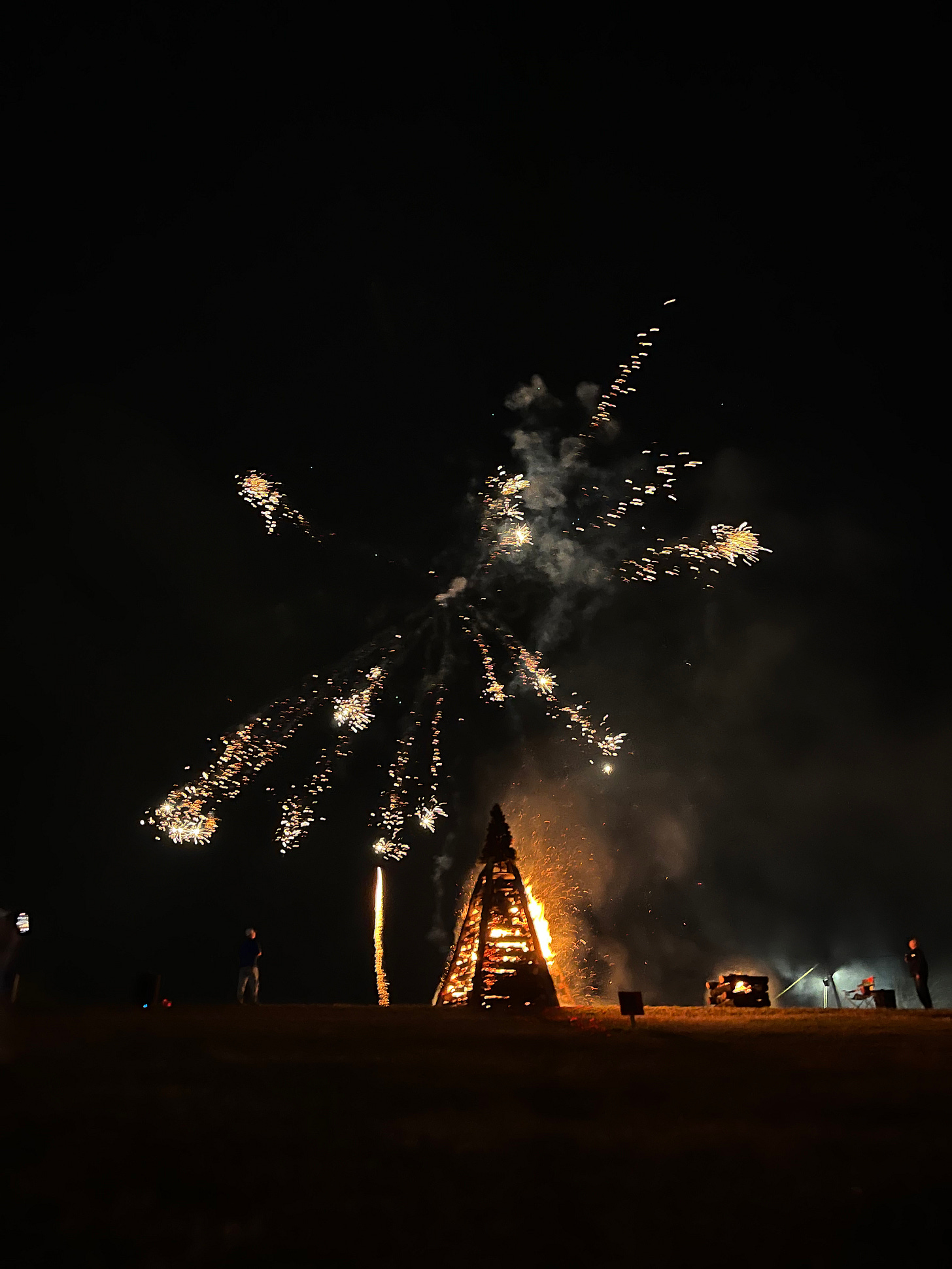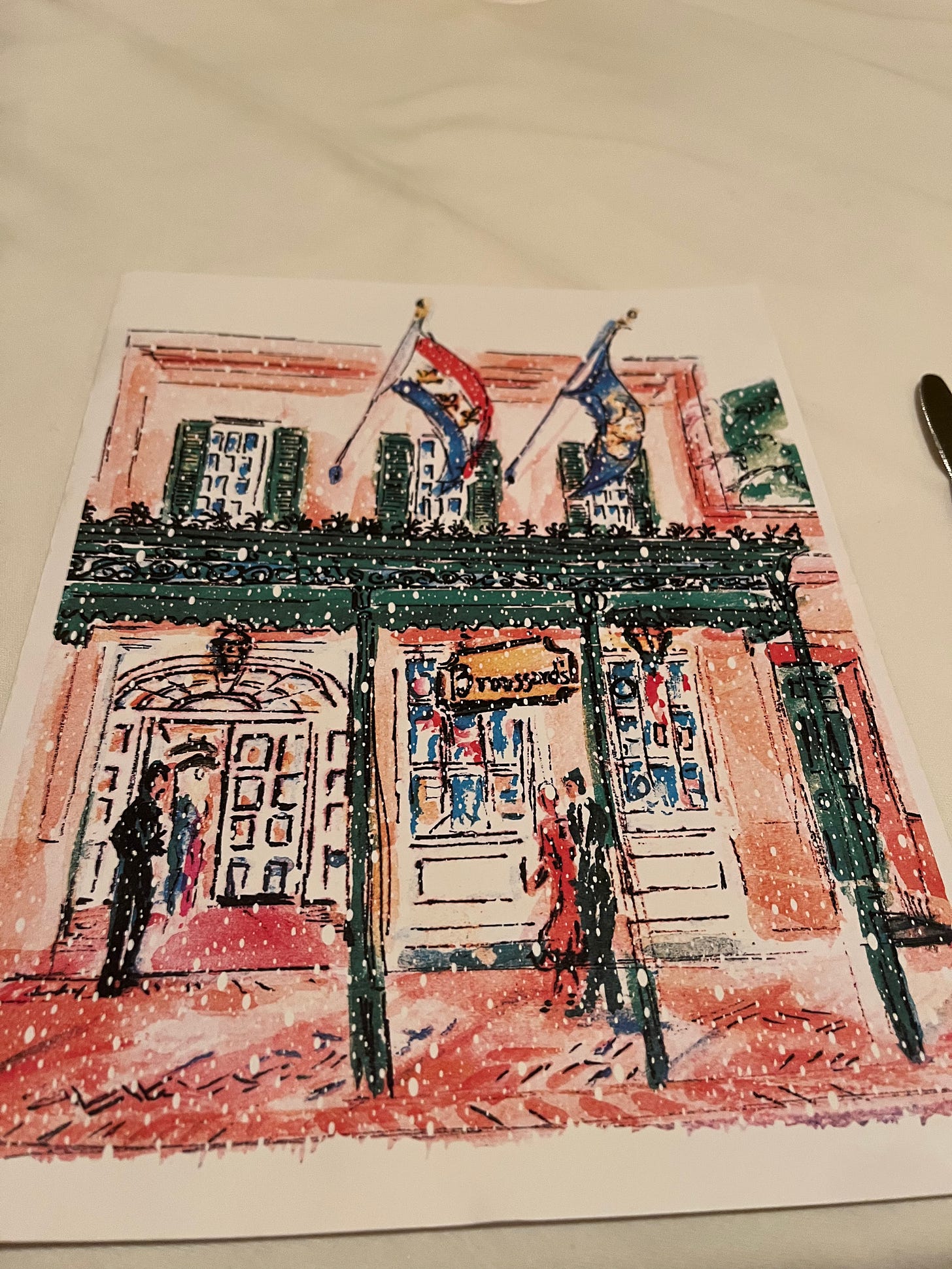Hello and Merry Christmas to all who celebrate!
My first few weeks working in Louisiana were spent talking to as many people in the parishes I cover as possible. City council members, teachers, cops, random citizens, librarians, museum curators––anyone who would have a meeting with me. Across the board people told me Louisiana was different from the rest of the country. It has more culture, a richer history, unique terrain. I appreciate how true that is every day. Louisiana is like nowhere in the U.S. I have ever been. Each state is distinct, but you have to give Louisiana credit for its cultural impact and hyper-regional traditions. Enter, bonfires.
Bonfires on the Levee
Each year in the River Parishes, people build elaborate bonfires along the Mississippi River on Christmas Eve to light the way for Papa Noel. French-German settlers brought the tradition over in the 1700s, the story goes. Whether the fires were originally used to guide ships along the river, built by enslaved people to celebrate harvest, or to light the way to church is disputed. But today the tradition is all about Santa. Or so I was told, and so is presented in all marketing materials about the bonfires. I was imagining lots of fires, some amateur some more elaborate, plenty of kids excited about Santa, maybe some hot chocolate or mulled wine, definitely some sort of speech or at least some sort of ceremonial announcement before the first fire was lit.
But like so often in Louisiana, i was surprised. Photos and even videos do not do the scene at the Christmas Eve bonfires (which actually took place on Dec. 23rd this year due to weather) justice. First of all, they’re huge. These are professional tree-shaped bonfires, for the most part. One was shaped like a truck, another a viking ship, another an alligator gar. And this was far from some idyllic Christmas tradition. It was chaos, in a hilarious, endearing way.
There were dozens of teenagers filing up 64-ounce cups with ice at the gas station, buying orange juice, and not at all subtly adding their own vodka. Those same teenagers proceeded to drive ATVs and dirt bikes up and down the levee. There were older people dressed up in festive colors and sweaters, and kids in t-shirts and shorts. Because drinking outdoors is legal, everyone was drinking. There was a procession of slingshots (those low, three-wheel open-air vehicles) , organized in their driving but each blasting completely different music. There were side bonfires to the bonfires, lit before the event started. There were parties, with tents and tons of food. People seemed clearly affiliated with specific bonfires. There was a bonfire with a small Christmas tree on top. There was one with an American flag and a photo of Trump. At one point, a burning log fell off a fire and rolled down the grassy levee, nearly hitting several children. No one bothered to move it and it smoldered for as long as we were there. There were no firetrucks in sight (but I’m guessing they had to be on call, right?) In any case, this has been going on for years and so far, so good.
The bonfires were set to start at 7 p.m. We wondered if they would be lit in order, down the levee, or all at once. At 6:53 someone near the beginning, but not the first one, apparently decided it was go-time. The rest followed haphazardly. The fire with the Christmas tree on top was the star of the show. They had it blazing within seconds (pouring gasoline on helped), they had a world-class fireworks show, and they had Katy Perry “Firework.” It was incredibly impressive and fun.
A few fires over, the Trump flag burned. We had so many questions. Was it being burned in effigy or in homage? It seemed like the latter. Don’t these “patriots” know printing a photo on a flag is the violation of the U.S. Flag Code? And that flag burning only became legal because of someone protesting Ronald Reagan? We had so many questions. So did many other spectators. I wanted to find out more, but we had to get to New Orleans for our Réveillon Dinner.
Réveillon
Creoles in New Orleans started holding réveillon dinners, a large meal after midnight mass on Christmas Eve, in the early 1800s. Réveillon comes from réveil, meaning “waking” in French, and like many Louisiana traditions this one comes from France. These days, restaurants host Réveillon dinners with set menus throughout December, with reservations at normal dinner times, not 2 am.. Menus typically feature a mix of the restaurant’s signature dishes and festive desserts.
We went to Brennan’s for fried oysters with tasso, gumbo, duck for Nathan and a spin on carbonara with oysters for me.
And then, we watched hours of Harry Potter movies at our hotel, as one does on Christmas weekend, and A Miracle on 34th St. this morning.
Just a couple links
Christmas is canceled in the place of Jesus’ birth
I have been wondering this of many of my fellow journalists over the past two months
Now we’re off to Denmark to visit my brother and meet up with the rest of my family.
Happy New Year!
-Rebecca ❤️







